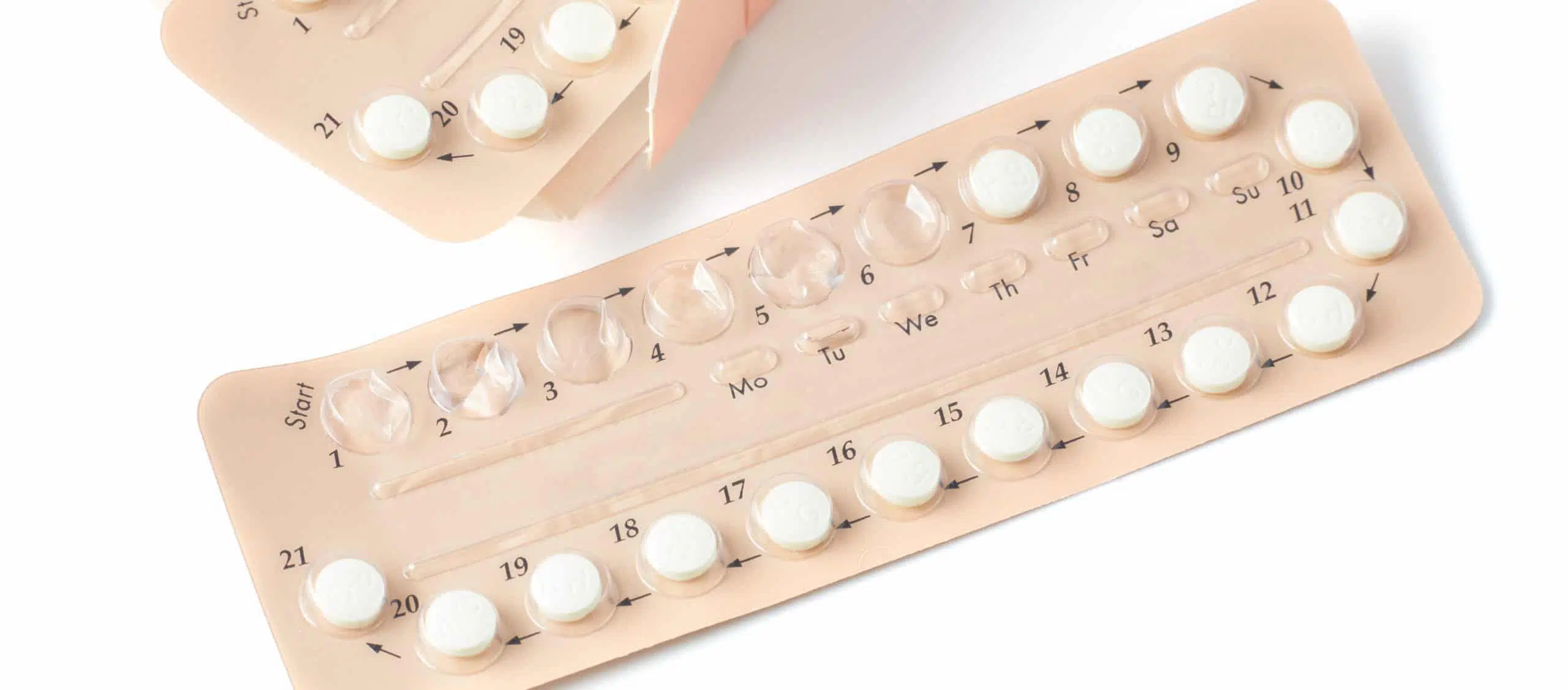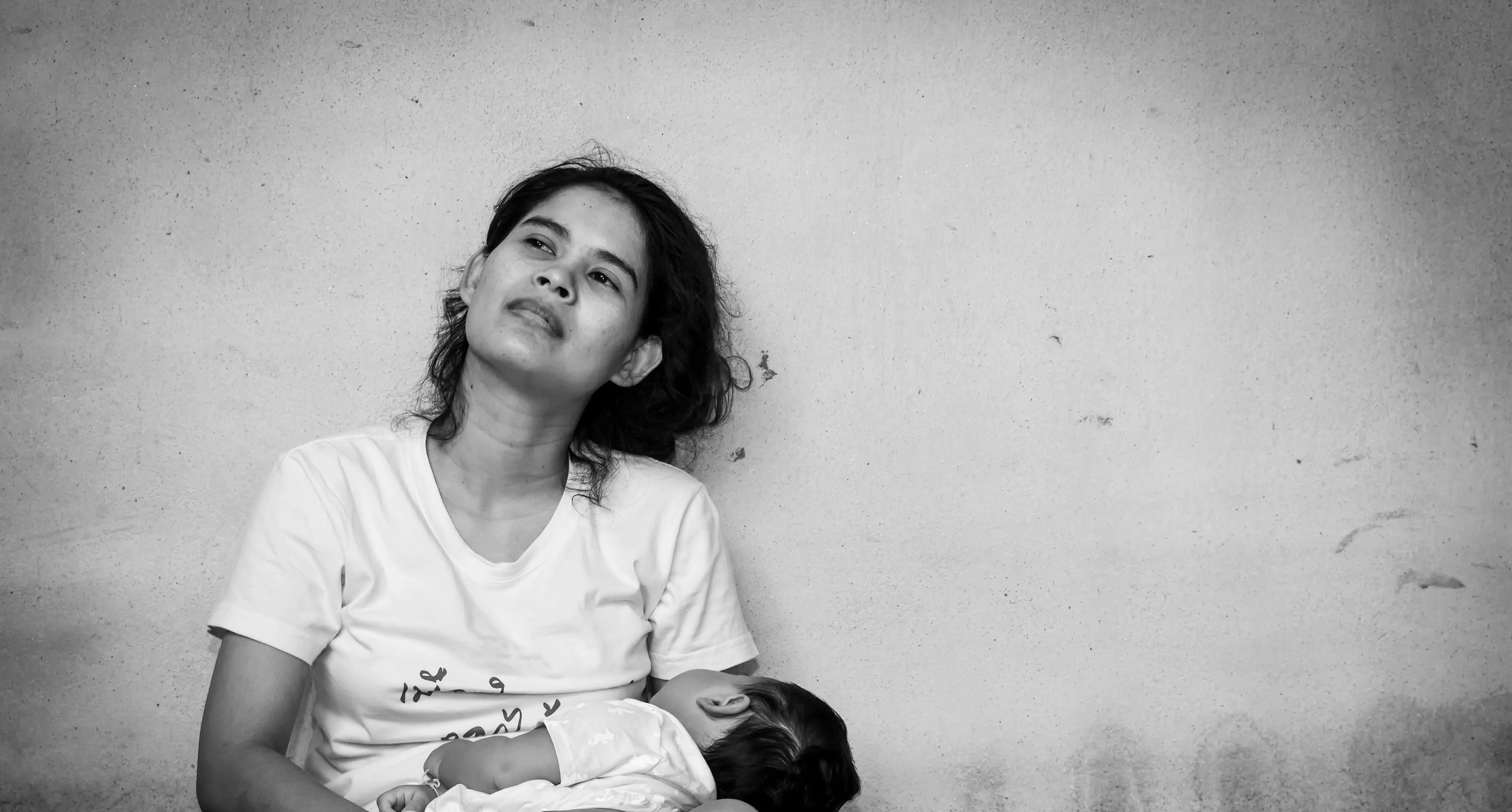Introduction
One of the most prominent features of the culture of death is its short-sightedness. It puts grand plans into action and makes sweeping promises about how many lives will be saved or improved by its initiatives. And then its architects are invariably shocked and surprised when a galaxy of negative unintended consequences quickly emerge, usually making the situation much worse than it was before. To put it simply, the culture of death is entirely ignorant of sinful human nature.
The classic example of this absolute lack of foresight is the birth control pill.
From the very first day it was introduced, “family planning” experts hailed the Pill as the conclusive solution to “unwanted pregnancies.” But continued promises of high efficiency, combined with the easy availability of abortion as a “backup,” inevitably led to widespread careless use and abuse of the Pill. When the Pill failed to prevent pregnancy, many women felt entitled to an abortion because they believed that medical technology had failed them and that another type of medical technology was the “answer” to their problem.
Failure Rate of the Pill
Use of the Pill requires care and consistent attention. Each cycle of pills must be taken in the proper order every day at about the same time. So women often forget to take pills, take them at the wrong time, or lose them. This is the major contributor to an incredible number of unintended pregnancies, especially among younger women. U.S. women who are on the Pill experience nearly a million unintended pregnancies annually, and more than 40% of these occur among girls and women 15 to 24 years old.1
The method effectiveness of the Pill is 99.7% per year. This percentage is extremely high, but it refers to the efficiency of the Pill when a woman is in excellent health and uses the Pill without error. When user error and illness are factored in, the result is the actual, or “real world” user effectiveness rate. In the case of the Pill, this is only 91% per year.2 This means that 9% of women on the Pill will become pregnant in any given year of use. In other words, the Pill itself is responsible for only about 3% of all failures, and the users are responsible for the remainder.
The 91% “real world” effectiveness rate for the Pill still sounds high until we calculate the probability of a woman becoming pregnant over an extended period of time when using it. She has a:
- 9% probability of becoming pregnant in the first year
- One in four (25%) probability in three years
- 38% in five years
- 61% in ten years.3
In summary, if a sexually active girl of 15 starts using the Pill continuously, there is a nearly 50% chance that she will become pregnant by the time she is 22!
This statistic is verified by pro-abortionists, including Dr. Christopher Tietze, who said, “Within 10 years, 20 to 50 percent of Pill users and a substantial majority of users of other methods may be expected to experience at least one repeat abortion.”4 Note that Tietze is speaking about repeat (second or more) abortions here. These statistics are significant when one considers that one of the primary goals of school-based clinics (SBCs) is to distribute contraceptives and abortifacients to teenagers without parental consent or knowledge.
These rates are in line with Alan Guttmacher Institute figures which show that half of all abortion patients thirty years ago were practicing contraception during the month in which they conceived. Additionally, the majority of abortion patients who had stopped using a method prior to becoming pregnant said they had most recently used the Pill.4
The situation has not improved, despite decades of saturation propaganda campaigns by everyone from big pharma to Neofeminist groups. A 2007 Marie Stopes International study found that 43% of aborting women were using the Pill when they got pregnant, and another 27% were using condoms. And in 2014, the British Pregnancy Advisory Service, the largest chain of abortion mills in the United Kingdom, found that 27% of women obtaining abortions were on the Pill when they got pregnant, while 35% were using condoms. BPAS Executive Director Ann Furedi confirmed what pro-lifers have always claimed when she acknowledged, “Ultimately women cannot control their fertility through contraception alone, and need accessible abortion services as a back-up for when their contraception lets them down.”
Negative Effects of the Pill on Health
Even after the shift from high-dose to low-dose pills, United States federal courts classified the birth control as “unavoidably unsafe.”5 This means that implicit in a woman’s consent to use the Pill is an acknowledgement of physical risk ― even if she is not entirely informed of all (or any) of its dangers.
This legal classification means that women injured by the Pill have a much harder time recovering damages. Dr. John Hildebrand, an expert in the field of human reproduction, estimated that more than 500 women die every year because of pill-induced effects. This startling number is confirmed by figures provided by the Alan Guttmacher Institute (the world’s foremost abortions statistics analyzer) and one of the foremost abortionists in the United States, Warren Hern. His textbook Abortion Practice contains figures that lead to the conclusion that more than 30,000 American women have died due to direct side effects of the Pill since it was adopted in the United States ― with a current average of 600 to 700 deaths per year.6
It is ironic indeed that the same pill that the radical feminists pushed so hard as part of their solution to illegal abortion deaths now kills five to seven times as many women per year as illegal abortions themselves did before Roe v. Wade. And, with a few minor exceptions, these feminists do not breathe a word about it.
In 2010, major magazines, newspapers and pro-abortion organizations celebrated fifty years of “The Pill” and trumpeted how it has freed women from “unwanted childbearing” and drudgery. Perhaps they should tell that to the loved ones of the more than thirty thousand women who have died from the fatal side effects of the Pill.
The manufacturers of each of the more than 125 brands of birth control pill issue patient information pamphlets (PIPs) which give detailed information on each one. These standardized forms each have sections entitled “Warnings and Precautions” and “Adverse Reactions,” which list anywhere from 50 to 67 side effects of the Pill. The most serious of these include cardiovascular and breast problems.
The most dangerous and well-documented side effects commonly associated with the Pill are heart attacks and strokes. The eight-year Nurse’s Health Study at Harvard Medical School found that Pill users are 250% as likely to have heart attacks and strokes than those who don’t use the Pill, probably because the Pill greatly increases blood clotting ability. One of the major findings of the study was that women who get off the Pill have rates of cardiovascular disease equal to that of the general population after a period of one year.7 All of the patient information pamphlets produced by the manufacturers of the Pill confirm that the drug increases these risks.
Soon after the high-dose pills were phased out in favor of the low-dose regimen, the Pill came under intense scrutiny by researchers. In 1988, scientists at the Boston University School of Medicine, the University of Pennsylvania, and New York’s Memorial Sloan-Kettering Cancer Center showed that the longer women took the Pill, the greater were their chances of contracting breast cancer. The risk of developing breast cancer was found to be twice as great by age 45 for women who had used the Pill for less than ten years and four times as great for women who had used the Pill for greater than ten years.
After a decade of accumulating evidence, the International Agency for Research on Cancer (IARC) classified combined oral contraceptives as “carcinogenic to humans” (Group 1). In 2005, the IARC confirmed this classification and has not changed it since.8
Researchers at the Mayo Clinic followed up this classification with the most comprehensive review of studies on the Pill-breast cancer link ever performed. They found that 21 of 23 large, well-conducted studies found that there was an average of a 44% increased risk of breast cancer in women who were taking the Pill prior to their first pregnancy.
Negatives Effects of the Pill on Society
We have seen that the birth control pill is so ineffective that it fails hundreds of thousands of times annually in the United States, leading to hundreds of thousands of surgical abortions. We have also covered some of the more serious physical side effects inflicted upon women by the Pill, including more than 30,000 deaths and tens of thousands seriously injured since its introduction.
The indirect impacts of the Pill are much more diffuse, but are terribly damaging to society in general. The Pill impacts not only women, but men and children.
Since its introduction, the Pill has contributed heavily towards sexual promiscuity, the increase of illegitimate births, and the degradation of marriage and the family.
1. Increased Promiscuity
Immediately after the Pill was introduced in the mid-1960s, premarital sex and cohabitation both almost doubled in only five years. Currently, 48% of all couples living together are not married. People of all ages (but especially teenagers) are having premarital sex more than ever before.
Wife-swapping clubs, organized orgies, membership in sex addiction treatment organizations like Sexaholics Anonymous, hard-core pornography, and “fantasy [sex] tours” to Far East nations have increased tremendously.
After witnessing two decades of this social carnage, the developers of the Pill admitted that its wide availability appeals strongly to those persons with little regard for sexual ethics. Dr. Robert Kirstner of Harvard Medical School said, “About ten years ago, I declared that the Pill would not lead to promiscuity. Well, I was wrong. The birth control pill has been a major causal factor in the rapid increase in both V.D. and cervical cancer among adolescents by stimulating higher levels of promiscuity.”9 And Dr. Min-Chueh Chang acknowledged, “[Young people] indulge in too much sexual activity … I personally feel the Pill has rather spoiled young people. It’s made them more permissive.”10
Dr. Alan Guttmacher, former Medical Director of the International Planned Parenthood Federation, also drew a clear picture of the link between abortion and contraception within the context of increased promiscuity nearly fifty years ago: “When an abortion is easily obtainable, contraception is neither actively nor diligently used. If we had abortion on demand, there would be no reward for the woman who practiced effective contraception. Abortion on demand relieves the husband of all possible responsibility; he simply becomes a coital animal.”11
Finally, psychologists Eugene Sandburg and Ralph Jacobs noted the obvious connection between contraception and abortion as birth control: “As legal abortion has become increasingly available, it has become evident that some women are now intentionally using abortion as a substitute for contraception.”12
Drs. Kirstner and Min-Chueh were certainly correct in their assessment of the situation. In 1970, only 4.6% of all 15-year-old girls had experienced premarital sex. By 2000, this rate had increased more than eightfold to 40%. Of all unmarried girls in the 15 to 19 age bracket, 28.6% had had premarital sex in 1970. This rate had more than doubled to 61.4% by 199013 and reached about 80% by 2000.14
2. Illegitimate Births
The inevitable result of the combination of increases in premarital sex and of ‘unwanted pregnancy’ is an increase in illegitimate births and abortion. This principle is so obvious that leading “family planners” recognized it in the early 1970s.
Professor Kingsley Davis of the United States Commission on Population Growth and the American Future stated:
The current belief that illegitimacy will be reduced if teenage girls are given an effective contraceptive is an extension of the same reasoning that created the problem in the first place. It reflects an unwillingness to face problems of social control and social discipline, while trusting some technological device to extricate society from its difficulties. The irony is that the illegitimacy rise occurred precisely while contraceptive use was becoming more, rather than less, widespread and respectable.15
The illegitimacy rate for births among teenaged girls hovered around 5 – 7% for decades until about 1960. Between 1960 and 1970, it doubled as the birth control pill ushered in the “Sexual Revolution.” After 1970, the teenage illegitimacy rate exploded with the introduction of comprehensive sex education programs and school-based clinics.
The overall illegitimacy rate for all children born in the United States was 5% in 1960. This rate had increased by 700% to 40.7% by 2008.16
This phenomenon is not just an ethical or religious concern, it is a profoundly practical one. Social workers know that children born into one-parent families are much more likely to be abused and abusive, to be undereducated, to be under- or unemployed, to have illegitimate children themselves, and to be far more likely to become involved in criminal activity.
3. Degradation of Marriage and Family
In 1965, before the Pill became widely available, about 15% of all couples lived together before marriage. The major reason for the relatively low incidence of this arrangement was simple: living together meant more sex, and more sex meant a greater chance of a pregnancy in a nation where abortion was still illegal.
Today, many young unmarried women are on the Pill and abortion is readily available as a backup. They feel that they have no reason not to be sexually active and “shack up” before marriage.
As a result, nearly half of all couples in the United States now live together before marriage. This in turn causes great problems because more than 75% of all couples who lived together before marriage eventually divorce.17 The Pill has also contributed greatly to our country’s exploding divorce rate, which was about 18% in 1965 and now stands at about 50%.
Predictably, the innocent children of divorced couples are always those who suffer the most. But the gender feminists and sexologists simply write them off as a sort of necessary “collateral damage,” inevitable victims of the Sexual Revolution and the war against one’s own sexuality.
Implications for Pro-Lifers
Millions of women in the USA and all over the world use the Pill. Many women who would never consider a surgical abortion now use low-dose pills that cause them to abort a new life an average of once or twice every year. A large number of women who claim to be pro-life use these pills, many at the urging of their husbands. These are usually women who are ignorant of the Pill’s abortifacient mode of action, those who think that their way of life requires that they use the Pill, or those who cannot mentally make the connection between contraception and abortion.
Pro-abortionists play upon this theme constantly. For example, “Catholic” House Minority Leader Nancy Pelosi claimed, “98 percent of Catholic women use birth control to determine the size and timing of their families.” The reality is that 83% of Catholic women use artificial birth control (32% have been sterilized), and only 31% of Catholic women use the Pill.
Researchers have calculated that the birth control pill directly causes between 1.53 and 4.15 million chemical abortions per year in the United States ― up to four times the total number of surgical and medical abortions committed every year! We can calculate that about 750 million “silent abortions” have occurred in the United States since the birth control pill began to come into wide use in 1965.18
To put this into perspective, for every surgical and RU-486 abortion that has been performed in this country, a dozen “silent abortions” have taken place.
This means that otherwise pro-life women who are using the Pill or some other means of abortifacient birth control are committing abortions themselves on a frequent basis. These abortions are “silent” and unseen, but they are no less abortions than are gruesome third-trimester D&X abortions. There are many pro-lifers who are using these pills and who are involved in their promotion and distribution. These people must consider whether they can, in good conscience, criticize women whose action differs from their own only in that they have to drive to an abortion mill to commit it.
Conclusion
When Pope Paul VI overrode the recommendations of his Birth Control Commission and wrote Humanae Vitae in 1968, he was exposed to widespread criticism, dissent and ridicule. But the four predictions he made in his great encyclical have undeniably come true. These are:
- Infidelity and moral decline
- Loss of respect for women
- Abuse of power by public authorities
- A false sense of unlimited dominion over one’s body.
Today, most women (and men) see contraception as essential to their lives, and what was once mortal sin has “evolved” in the minds of most Catholics into an absolute necessity of life, something they simply cannot do without.
The great irony in all of this is that those who follow Church teachings regarding sexual morality are not only happier, they find their lives less difficult and complicated in the long run.
This is how Our Lord planned it, and this is the way we should live.
+ Endnotes
[1] See Chapter 21 of The Facts of Life, “Contraception.”
[2] Robert A. Hatcher, et. al. Contraceptive Technology (20th Revised Edition) [New York: Ardent Media, Inc.], 2011. Table 26-1, “Percentage of Women Experiencing an Unintended Pregnancy During the First Year of Typical Use and the First Year of Perfect Use of Contraception and the Percentage Continuing Use at the End of the First Year. United States,” page 791.
[3] For references and calculations, e-mail Brian Clowes at bclowes@hli.org and ask for Excel spreadsheet F-02-05.XLS, “Probability of Pregnancy over Time for Fertile Women Who Use Various Methods of Birth Regulation, Ranked by User Effectiveness Rates.”
[4] Christopher Tietze, quoted in the National Abortion Rights Action League’s A Speaker’s and Debater’s Guidebook. June 1978, page 24.
[5] Thomas P. Monaghan, Co-Chairman, Free Speech Advocates. “Unavoidably Unsafe.” Fidelity Magazine, October 1987, pages 14 and 15.
[6] For references and calculations, e-mail Brian Clowes at bclowes@hli.org and ask for Excel spreadsheet F-02-06.XLS, “Estimate of Annual Deaths Attributable to Use of the Birth Control Pill in the USA, 1960-2014.”
[7] Dr. Meir J. Stampfer. New England Journal of Medicine, November 24, 1988. This study was based on an eight-year follow-up of 119,061 female nurses, ranging in age from 30 to 55 in 1980. 7,074 were current pill users and 49,269 were previous users. Overall, there were 380 heart attacks, 205 strokes, and 230 cardiovascular deaths among pill users.
[8] UNDP/UNFPA/WHO/World Bank Special Program of Research, Development and Research Training in Human Reproduction (HRP). “Carcinogenicity of Combined Hormonal Contraceptives and Combined Menopausal Treatment,” September 2005, page 1.
[9] Dr. Robert Kirstner, Harvard Medical School, one of the original developers of the birth control pill. Quoted in Barret L. Mosbacker. Special Report: Teenage Pregnancy and School-Based Clinics [Washington, D.C.: Family Research Council], 1986, and in ALL About Issues, June 1981, page 5 [emphasis in the original].
[10] Dr. Min-Chueh Chang, one of the inventors of the birth control pill. Quoted by Charles E. Rice. “Nature’s Intolerance of Abuse.” ALL About Issues, August 1981, page 6.
[11] Dr. Alan Guttmacher in a discussion at the Law, Morality and Abortion Symposium, held at Rutgers University Law School, March 27, 1968. Rutgers Law Review, 1968(22):415-443.
[12] Eugene C. Sandburg, M.D. and Ralph I. Jacobs, M.D. “Psychology of the Misuse and Rejection of Contraception.” American Journal of Obstetrics and Gynecology, May 15, 1971, pages 227 to 237.
[13] “The US Family Staggers into the Sexy Secular Future.” Family Research Newsletter, January-March 1991, page 1, Table 1, “Percentage of Women Aged 15-19 Who Reported Having Had Premarital Sexual Intercourse, By Race and Age ― United States, 1970-1988.” Numbers from 1988 to 1992 are linearly extrapolated using 1985-1988 rates.
[14] United Nations Children’s Fund (UNICEF). “A League Table of Teenage Births in Rich Nations.” July 2001, page 2.
[15] Professor Kingsley Davis. “The American Family, Relation to Demographic Change.” Research Reports, United States Commission on Population Growth and the American Future. Volume I, Demographic and Social Aspects of Population Growth, edited by Robert Parke, Jr., and Charles F. Westoff [Washington, D.C.: United States Government Printing Office], 1972, page 253.
[16] United States Department of Commerce, Bureau of the Census. Reference Data Book and Guide to Sources, Statistical Abstract of the United States [Washington, DC: United States Government Printing Office], 2012 (132nd Edition). Table 78, “Live Births, Deaths, Marriages and Divorces: 1960 to 2008,” shows 4,248,000 total births for the year 2008, and Table 85, “Births to Unmarried Women by Race, Hispanic Origin, and Age of Mother: 1990 to 2008” shows 1,727,000 births to unmarried mothers in 2008, for a percentage rate of 40.7%. The entire Statistical Abstract for the current year in PDF format is available on the Census Bureau website.
[17] In 1989, James Bumpass, James Sweet, and Andrew Cherlin of the University of Wisconsin completed a long-term study to determine the effect of prenuptial cohabitation on marriage. Described in Dale Vree. “Hey, it Sounds Plausible.” National Catholic Register, May 7, 1989, page 5.
[18] For references and calculations, e-mail Brian Clowes at bclowes@hli.org and ask for Excel spreadsheet F-02-A.XLS, “Birth Control Methods Used by United States Women, and Overall Estimated Number of “Silent Abortions,” 1965-2013.”
Dr. Brian Clowes has been HLI’s director of research since 1995 and is one of the most accomplished and respected intellectuals in the international pro-life movement. Best known as author of the most exhaustive pro-life informational resource volume The Facts of Life, and for his Pro-Life Basic Training Course, Brian is the author of nine books and over 500 scholarly and popular articles, and has traveled to 70 countries on six continents as a pro-life speaker, educator and trainer.











